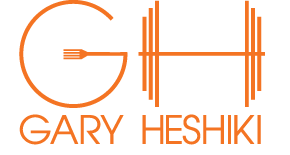The Best Workout For Your Butt
What I want to lay out for you is the framework for a program you can alter accordingly based on how you're feeling and what you see staring back at you in the mirror.
I'll outline a few guidelines and you can increase weight, reps and exercises as you see fit along with the rationale for why.
Progressive Overload
This is the concept that you're continually be trying to get your body to adapt to the stresses you're placing on it. It's a key component to both growing a muscle and decreasing body fat to improve muscle tone.
When discussing progressive overload, it's about building strength. You want to build strength because:
- Stronger muscles are generally larger muscles
- Strength gets rid of nagging pains (I.E: Nagging low back pain)
- The stronger you are the heavier your rep work will be (more on that in a moment)
Getting Your Reps In
After the main strength component will be more targeted repetition work. Think of this as supplemental work to the squats, deadlifts, and thrusts you'll be doing. Often this includes things like lunges, step ups, and squat-deadlift variants. Even here we still want to be moving the weights in an upward trajectory albeit not as aggressively.
Targeted Glute Work
You'll be performing some sort of glute work EVERY SESSION. This is a concept borrowed from High Frequency Training. Short band exercises will be included every time. Skip the abductor/adductor machine, band work is a superior option since it will maintain structural balance of the joints and muscles.
Program Overview
Day 1: Main Strength Day + Rep Work
Strength will be a Squat, Deadlift or Hip Thrust in a progressive manner. The numbers listed below simply mean a percentage of your one reputation max. You would test then plan your month accordingly. Your warm up sets DON'T COUNT towards the 5 work sets.
For example lets say your 1RM is 200lbs.
You warm up: Barbell-5x, 55lbs-5x, 80lbs-5x, 100 lbs-5x, 125lbs- 5x. NOW you perform 5 sets of 8 at 70% which would be 140lbs.
- WK 1: 5x8 @70%
- WK 2: 5x5 @75%
- WK 3: 5x3 @80%
- WK 4: 5x2 @85%
Rep work (5 sets of 8-12 reps) can entail:
If you Squatted: Reverse lunges, step ups, front squats
If you Deadlifted: KB Swings, cable pull throughs, Romanian deadlifts
Afterwards you would perform a superset (back to back) of core and a side lying clamshell (3-5 sets of 15-20 reps).
Day 2: Main Thrust Day
Today you'll be performing a lot of prone hip extension movements. If you're someone who's happy with the size and shape of their legs I would opt for the glute bridge over a hip thrust.
I would treat it similarly as the squat and deadlift strength days where I'm progressing clients through the rep ranges while simultaneously increasing the weight on the barbell. The one difference would be the final set or two.
EX: 5x10 Hip thrust @70% of best thrust.
185lbs- 5 sets of 10 repetitions.
On the final 2 sets of 185 lbs I would perform a hard long isometric hold at the top squeezing the glutes as hard and as tightly as possible.
Now where the real magic happens: perform 2 more sets decreasing the weight about 30-50% for no less than 20 repetitions. Even better if performed as a continuous hip thrust.
Supplemental Work: I would include MORE thrusts or bridge variations like single leg and stability ball leg curl+bridges along with a seated band abduction for no less than 20 repetitions.
Day 3: Unilateral Day
This day would include split squats, Bulgarian lunges and reverse lunges. These days will often be a variation of 5-8 sets of 8-12 repetitions each side.
I would then include a superset of side lying clamshells with frog pumps (4 sets of 20) and core work.
Day 4: Power
This day you can pair however you like:
Squats + Vertical Jumps
Deadlifts + Broad Jumps
Thrusts + Swings
I'd keep the weights more conservative on this day, your goal is to get a good pop from the weights and train explosiveness.
Afterwards I would include more band work: Seated band abduction into bodyweight weight hip thrusts off the seat (5 sets of 20) and core.
Notes:
- You should perform some sort of upper body pulling every day, examples include: Rows, pulldowns, inverted rows, and chin/pull ups.
- 2 days of upper body pressing, examples include: Push ups, dumbbell bench presses, dips, landmine press variations, dumbbell overhead press
- Core work should include: rollout variations, paloff presses, side planks, planks, and offset loaded carries like a one arm farmers walk.

